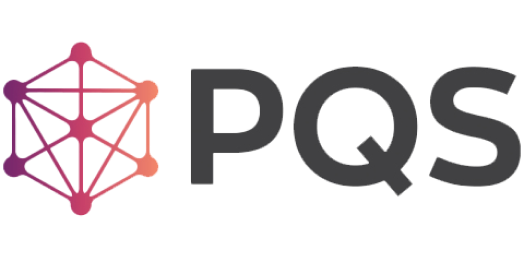RESEARCH SECTOR
Healthcare IT
The healthcare sector’s digital transformation presents immense opportunities for innovation. We focus on IT solutions that improve patient care, streamline healthcare operations and enable better health outcomes through data analytics, telehealth and personalized medicine.
Discover the latest trends and technologies shaping healthcare IT
"*" indicates required fields
Our healthcare IT work spans payer- and provider-related technology innovations, including workflow, analytic and data-driven solutions that promise reduced costs and improved outcomes in a sector that represents greater than 17% of U.S. gross domestic product.
Subcategories within the broader sector:
Provider: Revenue cycle management, patient engagement, population health, heath information management, governance, risk and compliance, and supply chain and logistics.
Payer: Distribution, member, provider and network management; care and utilization management; quality and revenue operations; and value-based care.
Healthcare expenditures already account for more than 17% of U.S. gross domestic product. This will almost surely increase as the nation continues to age (the “Silver Tsunami”) and as we continue to see increasing demand for healthcare services. Combined with government’s interest in payment models that better align costs with outcomes, this increased societal demand should drive demand for technology-based solutions that improve system efficiency and control costs. We also expect individuals to become more fully involved in navigating and making decisions about their healthcare. This should create continued opportunity for innovation, as the collective healthcare industry lags in enabling consumer-friendly experiences.
Featured insights and research reports

Compelling opportunity providing healthcare benefits to small businesses
Corey Greendale, Andrew Walsh, Walid Elmekki, Kenny Guerrero

Food as Medicine: The convergence of nutrition and clinical care in U.S. healthcare
Andrew Walsh, Kenny Guerrero

Practical and real-world applications of AI in healthcare today
Andrew Walsh, Kenny Guerrero

Telehealth: The foundation for next-gen health plan design
Andrew Walsh

Virtually better: Next generation delivery networks
Andrew Walsh

A fungus among us, and that could be a good thing
Tracy Marshbanks, Ph.D.
Venture capital activities

Intelligent Locations
intelligentlocations.ioProvider of AI-powered real-time location software (RTLS) for healthcare enterprises
Learn more
Intelligent Locations
intelligentlocations.ioProvider of AI-powered real-time location software (RTLS) for healthcare enterprises
Intelligent Locations pioneered the development of INTRAX™, delivering an advanced AI-powered localization platform for healthcare enterprises. Its software provides healthcare professionals with intuitive tools to track, measure and analyze assets, staff safety, patient satisfaction, operational workflows, environmental conditions and more. Headquartered in Raleigh’s Research Triangle, with a Center of Excellence in Paris, the company continuously advances its predictive analytics and machine learning capabilities.

Dina provides digital network management and coordination solutions to help health plans and providers improve access to in-home care, long-term services and supports, and supplemental benefits. Customers use Dina’s platform to digitize their provider networks, transform coordination workflows, manage compliance reporting requirements, and collect valuable insights from the home and community. As a result, coordinators can spend more time helping people stay home safely and less time with phone calls, emails and faxes. The Dina platform has earned certified status by HITRUST for information security. In 2022, Dina was named to the Inc. 5000 list of fastest-growing companies, and CB Insights Digital Health 150 list of companies transforming healthcare with digital technology.

Kno2
kno2.comCommunication platform for exchanging patient information across patients, providers, payers and IT vendors
Learn more
Kno2
kno2.comCommunication platform for exchanging patient information across patients, providers, payers and IT vendors
Kno2 provides a communication platform that enables secure patient information exchange between healthcare providers, payers and patients. Traditional point-to-point healthcare data exchange systems omit many parties in care chains, increasing healthcare costs and hurting patient experience and outcomes, so healthcare stakeholders are under intense pressure to improve patient data exchange. Kno2’s unique platform, delivered via a channel-partner go-to-market strategy, solves this problem with a network that connects all parties.
Relevant advisory transactions

Exclusive financial advisor
Intelligent Locations
Received growth investment from Marlin Equity Partners
Learn moreExclusive financial advisor
Intelligent Locations received growth investment from Marlin Equity Partners
First Analysis acted as the exclusive financial advisor to Intelligent Locations, a leading provider of AI-powered real-time location software for healthcare enterprises, in its growth investment from Marlin Equity Partners, a global investment firm specializing in the software, technology and services sectors.
About Intelligent Locations
Intelligent Locations pioneered the development of INTRAX™, delivering an advanced AI-powered localization platform for healthcare enterprises. Its software provides healthcare professionals with intuitive tools to track, measure and analyze assets, staff safety, patient satisfaction, operational workflows, environmental conditions and more. Headquartered in Raleigh’s Research Triangle, with a Center of Excellence in Paris, the company continuously advances its predictive analytics and machine learning capabilities.
About Marlin Equity Partners
Marlin Equity Partners is a global investment firm with nearly $10 billion in capital commitments specializing in the software, technology and services sectors. Marlin’s mission is to partner with exceptional management teams to drive scale and enhance long-term value in businesses through its deep domain expertise, extensive network and operational transformations focused on product innovation, go-to-market enhancements, and strategic M&A. Founded in 2005, Marlin has completed over 260 acquisitions. The firm is headquartered in Los Angeles, California, with an additional office in London.
Exclusive financial advisor
Upfront Healthcare has been acquired by Health Catalyst
First Analysis acted as the exclusive financial advisor to Upfront Healthcare Services (Upfront), a next-generation patient engagement platform provider, in its sale to Health Catalyst (Nasdaq: HCAT), a provider of data and analytics technology and services to healthcare organizations.
About Upfront Healthcare
Upfront is a mission-driven healthcare company delivering tangible outcomes to leading healthcare systems and provider groups. Its patient engagement and access platform makes each patient feel seen, guiding their care experience through personalized outreach. The backbone of the Upfront experience is its data engine, which analyzes clinical, sociodemographic, and patient-reported data. These insights, along with its advanced psychographic segmentation model, allow Upfront to individually activate patients to get the care they need while building a meaningful relationship between the patient and their health system. Upfront is rooted in partnership, leveraging best-in-class healthcare expertise to maximize the impact of technology and deliver a next-generation patient experience.
About Health Catalyst
Health Catalyst (HCAT) is a leading provider of data and analytics technology and services that ignite smarter healthcare, lighting the path to measurable clinical, financial, and operational improvement. More than 1,000 organizations worldwide rely on Health Catalyst’s offerings, including our cloud-based technology ecosystem Health Catalyst Ignite™, AI-enabled data and analytics solutions, and expert services to drive meaningful outcomes across hundreds of millions of patient records. Powered by high-value data, standardized measures and registries, and deep healthcare domain expertise, Ignite helps organizations transform complex information into actionable insights. Backed by a multi-decade mission and a proven track record of delivering billions of dollars in measurable results, Health Catalyst continues to serve as the catalyst for massive, measurable, data-informed healthcare improvement and innovation.
Exclusive financial advisor
Pharmacy Quality Solutions has been acquired by Innovaccer
First Analysis acted as the exclusive financial advisor to Pharmacy Quality Solutions (PQS), a leading pharmacy-payer performance technology, in its sale to Innovaccer.

About Pharmacy Quality Solutions:
Pharmacy Quality Solutions (PQS) aligns healthcare payers and pharmacies to achieve their shared goals of better patient outcomes and healthcare quality performance. As a neutral, trusted intermediary supporting the evolution of value-based care, PQS facilitates nationwide pharmacy-based care through its partners and the EQUIPP platform. Using deep clinical pharmacy knowledge and over a decade of performance management experience, PQS helps clients develop strategies, implement quality improvement programs and optimize the quality of healthcare for their Medicare, Medicaid and commercial populations.
About Innovaccer:
Innovaccer is the data platform that accelerates care innovation through innovative AI technologies. Innovaccer’s AI-powered healthcare platform unifies patient data across systems and care settings and empowers healthcare organizations with scalable, modern applications that improve clinical, financial, operational and experiential outcomes. Innovaccer’s EHR-agnostic solutions have been deployed across more than 1,600 hospitals and clinics in the U.S., enabling care delivery transformation for more than 96,000 clinicians and helping providers work collaboratively with payers and life sciences companies. Innovaccer has helped its customers unify health records for more than 54 million people and generate over $1.5 billion in cumulative cost savings. The Innovaccer platform is an industry-leading data and analytics platform, the Best in KLAS CRM solution, and the No. 1 rated population health technology platform by Black Book.
Exclusive financial advisor
BHS has partnered with ReviveHealth and Eir Partners
First Analysis focuses its advisory services on high-growth, entrepreneur-driven companies like BHS. The First Analysis team worked closely with the founder and management team to optimally position the company and find the best partner to help BHS to continue to achieve its objectives. First Analysis was actively engaged throughout the transaction process, including preparation, positioning, investor coordination and contact, due diligence and negotiation.

About BHS:
As a trusted provider of high-touch mental health and well-being solutions, BHS is focused on bettering lives and driving desired outcomes for its customers. With over 40 years of experience, BHS has provided long-standing, comprehensive programs to employers and their employees, higher education institutions and their students, unions/associations and their members, healthcare systems and their patients and communities and their residents. Since its inception, BHS has been committed to providing high-quality clinician-led experiences, as evidence proves that a human-to-human approach leads to better participant results and more substantial customer outcomes. BHS is dedicated to guiding individuals to the right resources at the right time and enhancing their health, productivity, and safety while simultaneously improving the culture, performance, and profitability of the organizations it serves. Helping people and organizations is BHS’s priority and passion.
Investment banking and corporate finance services are provided through First Analysis Securities Corporation (“FASC” or “First Analysis Securities”), a subsidiary of First Analysis Corp.







